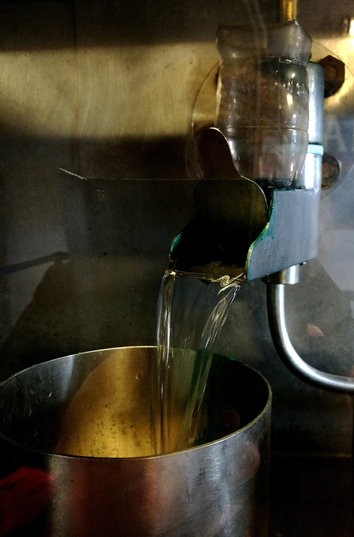Taste Guide: New Make
When Kilchoman founder Anthony Wills designed the distillery in the early 2000s, he had the rare opportunity to plan the house style of his distillery in advance as far as possible. To do so, he brought on board Dr. James Swan, a doctor of chemistry who had been scientifically involved in the many aspects of whisky production, including cask ageing, for decades and was regarded as one of Scotland’s leading whisky experts. He put the given premises of obtaining a light, fruity, fast-maturing whisky into practice by planning the equipment and production processes. The size and shape of the stills were planned according to his specifications, the extremely long fermentation time, the slow, gentle distillation, the very tight middle cut were further decisive points to achieve the desired character of the distillate.
Despite all scientific progress, the quality of a whisky from a newly built distillery is only rudimentarily predictable. Too many processes, especially during fermentation and cask maturation, are still insufficiently researched and thus form part of the “mystery” of whisky, but in the case of Kilchoman it can be clearly said that the specifications have been more than fulfilled.

How does Kilchoman new make taste?
The fresh distillate initially has a very distinct peat smoke note, but this is noticeably different from the heavy, earthy peat smoke attacks of the famous distilleries of Islay’s south coast (Laphroaig, Lagavulin, Ardbeg), which operate with a similar phenol content.
The peat smoke note of Kilchoman distillate reminds of cold ashes in the fireplace, because of the maritime notes of the distillate perhaps best described by the cold, slightly moist ashes of a bonfire on the beach – of course at Machir Bay. This is followed by very fruity notes. Citrus fruits – ripe lemons and oranges – as well as ripe pears and yellow plums are often mentioned as associations. The formulation of “cooked yellow fruits” is also often found.
Kilchoman New Make is so fruity and palatable that German tasters in particular like to compare it to fruit brandies.
There are of course differences between the two production lines of the distillery. As expected, the 100% Islay malt produced in-house with 20 ppm phenol content results in a somewhat weaker peat smoke nose than the malt from Port Ellen Maltings which is kilned with 50 ppm. But this also has the consequence that the 100% Islay new make has an even more fruity effect than the PE new make. Slightly different fruity notes are also noticeable, in addition to the above mentioned tropical fruits and even strawberries.
You can read how this very light, peaty and extremely fruity distillate develops in the various casks used at Kilchoman in the following chapters of the Kilchoman taste guide.
